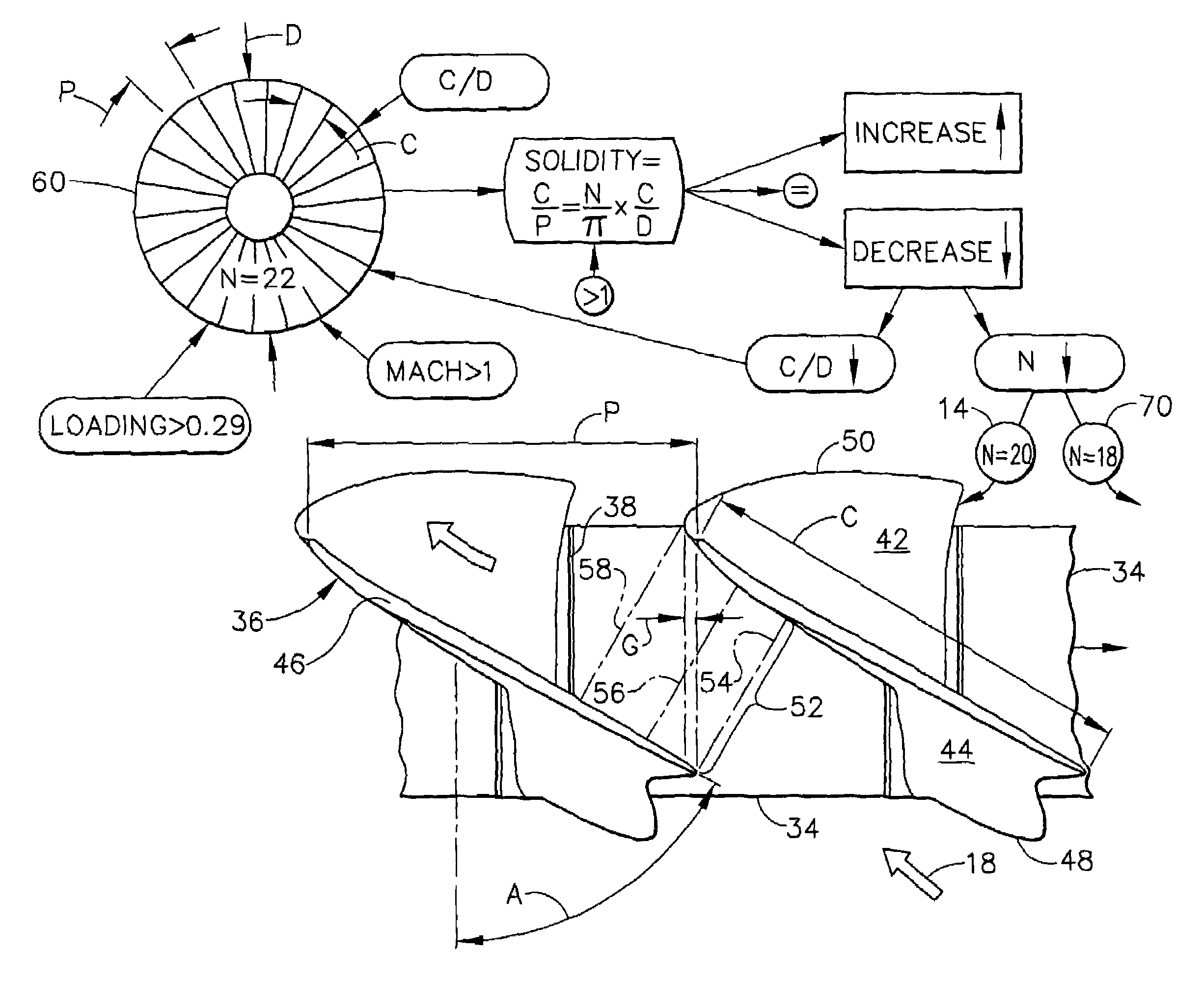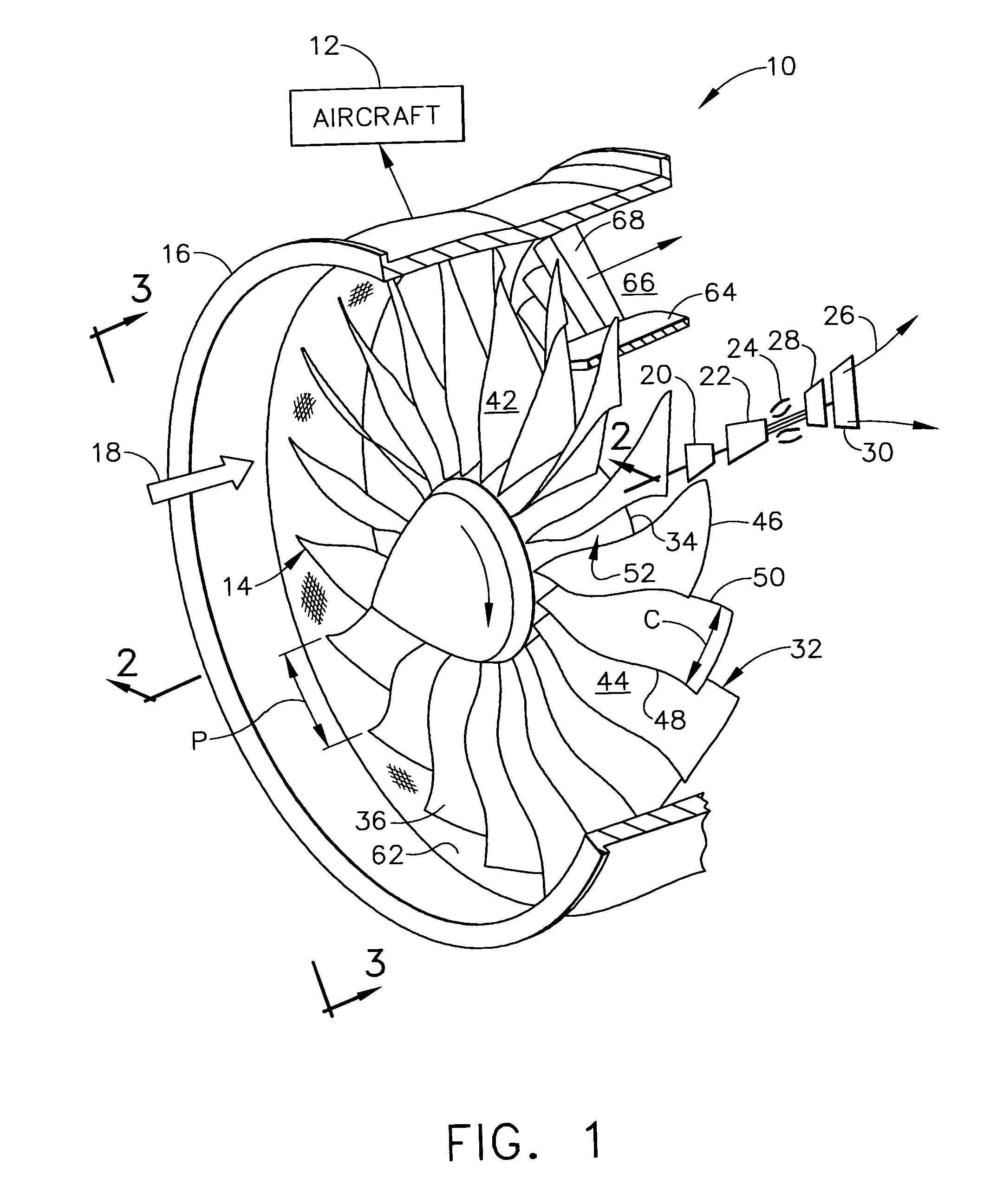Low solidity turbofan
a low-solidity, turbofan technology, applied in the direction of marine propulsion, vessel construction, other chemical processes, etc., can solve the problems of limited fan loading and high-complex design of turbofans, and achieve the effect of improving the efficiency of modern turbofans and adequate stability
- Summary
- Abstract
- Description
- Claims
- Application Information
AI Technical Summary
Benefits of technology
Problems solved by technology
Method used
Image
Examples
Embodiment Construction
[0028]Illustrated in FIG. 1 is a gas turbine engine 10 configured for powering an aircraft 12 in flight, and suitably mounted therein. The engine is axisymmetrical about a longitudinal or axial centerline axis and includes a fan or turbofan 14 suitably mounted coaxially inside a surrounding annular fan casing 16.
[0029]During operation, ambient air 18 enters the inlet end of the fan 14 and is pressurized thereby for producing propulsion thrust for propelling the aircraft in flight. A portion of the fan air is suitably channeled in turn through a low pressure or booster compressor 20 and a high pressure compressor 22 which further pressurize the air in turn.
[0030]The pressurized air is mixed with fuel in an annular combustor 24 for generating hot combustion gases 26 which are discharged in the downstream direction. A high pressure turbine (HPT) 28 first receives the hot gases from the combustor for extracting energy therefrom, and is followed in turn by a low pressure turbine (LPT) 30...
PUM
 Login to View More
Login to View More Abstract
Description
Claims
Application Information
 Login to View More
Login to View More - R&D
- Intellectual Property
- Life Sciences
- Materials
- Tech Scout
- Unparalleled Data Quality
- Higher Quality Content
- 60% Fewer Hallucinations
Browse by: Latest US Patents, China's latest patents, Technical Efficacy Thesaurus, Application Domain, Technology Topic, Popular Technical Reports.
© 2025 PatSnap. All rights reserved.Legal|Privacy policy|Modern Slavery Act Transparency Statement|Sitemap|About US| Contact US: help@patsnap.com



